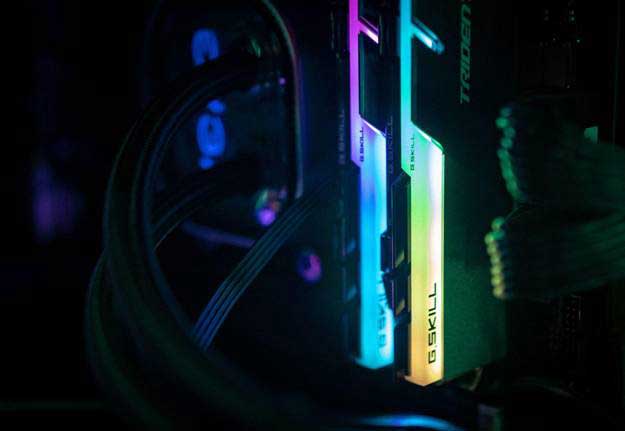Are you ready to propel your rendering projects into the future of uncompromising visual brilliance? The stage is set, and the spotlight falls on a critical element that can either elevate your creations or hold them hostage to sluggishness: the CPU. The significance of optimal CPU selection for rendering has never been more pronounced. As we dive into 2023, a landscape of technological innovation beckons, offering a new era of processing power.

Think of your CPU as the conductor of a symphony, orchestrating intricate details and rendering effects that transport your audience to a realm of immersive wonder.
Imagine the satisfaction of watching your complex scenes come to life effortlessly, thanks to a CPU that aligns perfectly with your artistic aspirations. Delve into the realm of computational cores, clock frequencies, and cache intricacies, and you’ll unlock the secrets to seamless rendering performance that was once relegated to the realm of dreams.
Join us on a journey to decode the intricate art of CPU selection for rendering in 2023. Gain insights that will empower you to make informed decisions, optimize your creative process, and unlock the full potential of your rendering endeavors. It’s time to shape your digital masterpieces with the precision and speed they deserve. Let’s dive in and embrace the future of rendering excellence.
Foundational Principles of CPUs
The CPU ecosystem can appear as an intricate web of terminologies. To simplify, the cornerstone of CPUs is the “core.” Initial CPU designs had a single core, facilitating one operation at a time. However, in the present scenario, multi-core CPUs dominate, executing multiple operations simultaneously. Furthermore, there’s the aspect of “clock speed” – essentially the CPU’s operational rhythm. The higher the clock speed, the more swiftly it processes tasks. Another pivotal feature is “hyperthreading,” which optimizes a single core to function as two, enhancing rendering speeds.
Technological Underpinnings of Rendering
Rendering is not just an art; it’s a science intertwined with methodical precision. Rendering software leverages the might of the CPU, decoding intricate visuals into digestible data, eventually producing the final image. Notably, the CPU doesn’t operate in isolation. The Graphics Processing Unit (GPU) collaborates with the CPU, and an ideal balance between them is imperative for efficient and speedy rendering outcomes.
Critical Aspects for CPU Selection in Rendering
Choosing a CPU goes beyond mere aesthetics or brand appeal. It’s pivotal to weigh performance metrics, which offer insights into a CPU’s capability. Equally significant is ensuring software compatibility to circumvent processing discrepancies. Additionally, one cannot sideline “Thermal Design Power (TDP),” which gauges the heat a CPU releases – a vital parameter impacting device longevity and consistent performance.
High-End, Mid-Range, and Budget
The maxim “quality comes at a price” aptly fits in the CPU context. Premium CPUs deliver unmatched performance, albeit at a premium price. They cater to those with an uncompromising appetite for excellence. Conversely, mid-range CPUs strike a balance between cost efficiency and commendable performance. For novices in the rendering domain, budget CPUs serve as an adequate starting point, ensuring decent performance without substantial financial outlay.
2023 CPU Landscape: An Analytical Overview
The current year has unveiled a slew of formidable CPU options. While getting lost in the granular details is easy, focusing on benchmarks and performance metrics offers a clear directional guide for prospective users. Remember, individual performance insights juxtaposed against collective reviews can highlight tangible application efficacy.
AMD vs. Intel: Analyzing the Titans of Rendering in 2023
The tech battleground frequently showcases the tussle between AMD and Intel. These behemoths, each with specific strengths, have a distinct footprint in the rendering universe. Scrutinizing their 2023 offerings, one can identify subtle performance differentiators and platform-specific attributes, each influencing the rendering journey distinctively.

Overlooked CPUs with Rendering Prowess
Mainstream CPUs often steal the limelight, there are unsung heroes in the shadows. Certain CPUs, despite not making the headlines, deliver value that can challenge the mainstream heavyweights. This suggests that visibility doesn’t always correlate with performance supremacy.
Strategies to Ensure Long-Term CPU Relevance
The tech landscape is constantly changing, and today’s pinnacle can quickly become obsolete. Therefore, cognizance of imminent technological shifts and potential upgrade avenues is crucial to ensure the CPU remains robust for future rendering tasks.
Unleashing the Full Potential of Your CPU
Heat is detrimental to CPU health. Implementing effective cooling strategies is quintessential for maintaining optimal temperature levels and ensuring sustained peak performance. For the tech aficionados, overclocking can amplify CPU performance. However, it’s a meticulous exercise necessitating a comprehensive understanding of potential advantages and pitfalls.
Conclusion
Embarking on the CPU selection journey demands a deep dive into technical nuances and informed decision-making. Armed with the right knowledge, one can adeptly traverse this complex terrain. Ultimately, the objective is to align your selection with your project requirements, ensuring your tools perfectly complement your creative vision.